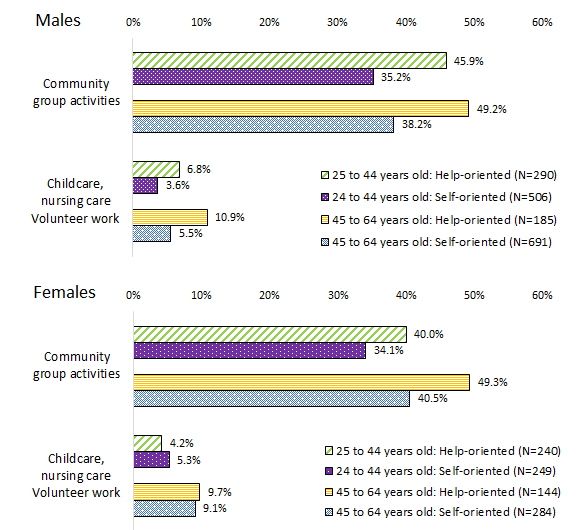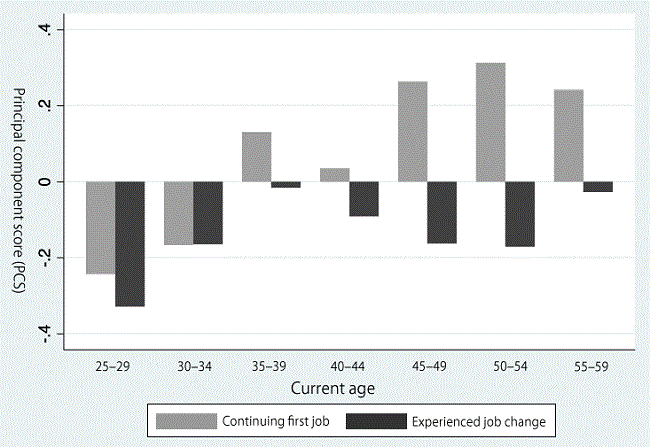JILPT Research Report No.221
Changing Employment Society and its Vitality: Challenges of Work Styles Adapted to the Industrial Structure and Demographics
March 31, 2022
Summary
Research Objective
This study focuses on long-term employment within the context of Japanese employment practices and aims to examine the likelihood that long-term employment will continue into the future and clarify the conditions under which it will survive or collapse. This is a report following the precedent of Nihonteki koyo shisutemu no yukue (The future of the Japanese-style employment system), Project Research Series No. 4 of the JILPT 3rd Midterm Project.
Research Method
In this project, the enterprise survey team focuses on human resource management in enterprises, while the individual survey team focuses on the employment behavior of individuals, both following the above objective by taking into account the labor demand and supply respectively. The individual survey team conducted a questionnaire survey targeting men and women aged 25 to 64 throughout Japan and compiled the result in this report.
Key Findings
- Among white-collar workers, long-term service at enterprises continues to be the mainstream of a career track. The reason being, it is mainly the long-serving employees who not only carry out tasks related to management and training but also engage in globalization-oriented duties, as a result securing high income at middle- and older-age. On the other hand, job changing may not be disadvantageous for manual blue-collar workers who carry out tasks such as driving and machinery operation (Figure 1).
- The rates of willingness for promotion to executive status, self-development, and acquiring new knowledge and skills decline with age; however, this trend is less pronounced among the highly educated and white-collar groups. Looking at self-development, people in the broadly defined professional service industry (medical; health care and welfare; education; and professional and technical services), which has a high percentage of females, are active in learning activities that involve interaction with others.
- Participation in social group activities such as community-based volunteer work (“community group activities”) increases among middle-aged and older people. However, among them, those who are independent and “self-oriented” (handling their own affairs trying to minimize reliance on others in their social interactions), tend not to participate in community group activities (Figure 2).
Figure 2. Percentages of participation in community group activities by sex, age group, and type of social interaction

Source: JILPT 2022, 177.
Figure 1. Principal component scores for management and development tasks by age group

Source: Created by the author based on this report (JILPT 2022).
Policy Implications
- The top strata of Japan's employment society remain dominated by people of long-term serving employees at enterprises, and no replacements for them can be seen in the fluid employment group. In this sense, Japanese society is still a long-term employment society where the advantages of long-term service at enterprises are significant.
- In the employment society of the future, where middle-aged and older people will be the majority in the demographics, not everyone will be eager about pursuing a career, and thus people will fall into one of two groups: active and non-active. Creating a vibrant labor market in response to this change will require a mind shift from the days when younger people were the majority.
- The hierarchical status of a person (e.g., his or her academic background, occupation, etc.) may be the factor that determines whether he or she falls into the active or non-active group. Nonetheless, it may be possible to increase the number of middle-aged and older people in the active group by focusing on the fact that opportunities to interact with others are a source of vitality for social activities.
Contents
- JILPT Research Report No. 221, full text (PDF:7.3MB) [in Japanese]
Research Period
April 2017–March 2021
Authors
- IKEDA Shingou
- Senior Researcher, JILPT
- TAGAMI Kota
- Researcher, JILPT
- YUGAMI Kazufumi
- Professor, Kobe University
- TAKENOSHITA Hirohisa
- Professor, Keio University
- SAKAI Kazufumi
- Research Associate, JILPT
- OISHI Akiko
- Professor, Chiba University
- OKAZE Kaoru
- Associate Professor, Kyoto Notre Dame University
- TAKAMI Tomohiro
- Vice Senior Researcher, JILPT
Category
Employment / Unemployment, Workers' life / Workers' awareness
For Citation
JILPT. 2022. Kawaru koyo shakai to sono katsuryoku: Sangyo kozo to jinko kozo ni taio shita hatarakikata no kadai [Changing Employment Society and its Vitality: Challenges of Work Styles Adapted to the Industrial Structure and Demographics]. JILPT Research Report no. 221. Tokyo: The Japan Institute for Labour Policy and Training.
Related Research
- Project Research Series No. 4 on the JILPT 3rd Midterm Project, Nihonteki koyo shisutemu no yukue [The future of the Japanese-style employment system] (2017).
- JILPT Research Report No. 210, Choki koyo shakai no yukue: Datsu kogyoka to mikonka no kiketsu [The future of the Japanese long-term employment society: The consequences of post-industrialization and increase of unmarried workers] (2021).
- Discussion Paper 21-10, Nihon kigyo ni okeru jinji seido kaikaku no 30-nen-shi [A thirty-year history of personnel system reforms in Japanese companies] (2021).
- JILPT Research Report No. 220, Choki kinzoku shisutemu no kanosei: Chuto saiyo to shinki jigyo kaihatsu ni chakumoku shite [The potential of the long-term employment system: With focus on mid-career hiring and new business development] (2022).
JILPT Research Report at a Glance
| To view PDF files, you will need Adobe Acrobat Reader Software installed on your computer.The Adobe Acrobat Reader can be downloaded from this banner. |

